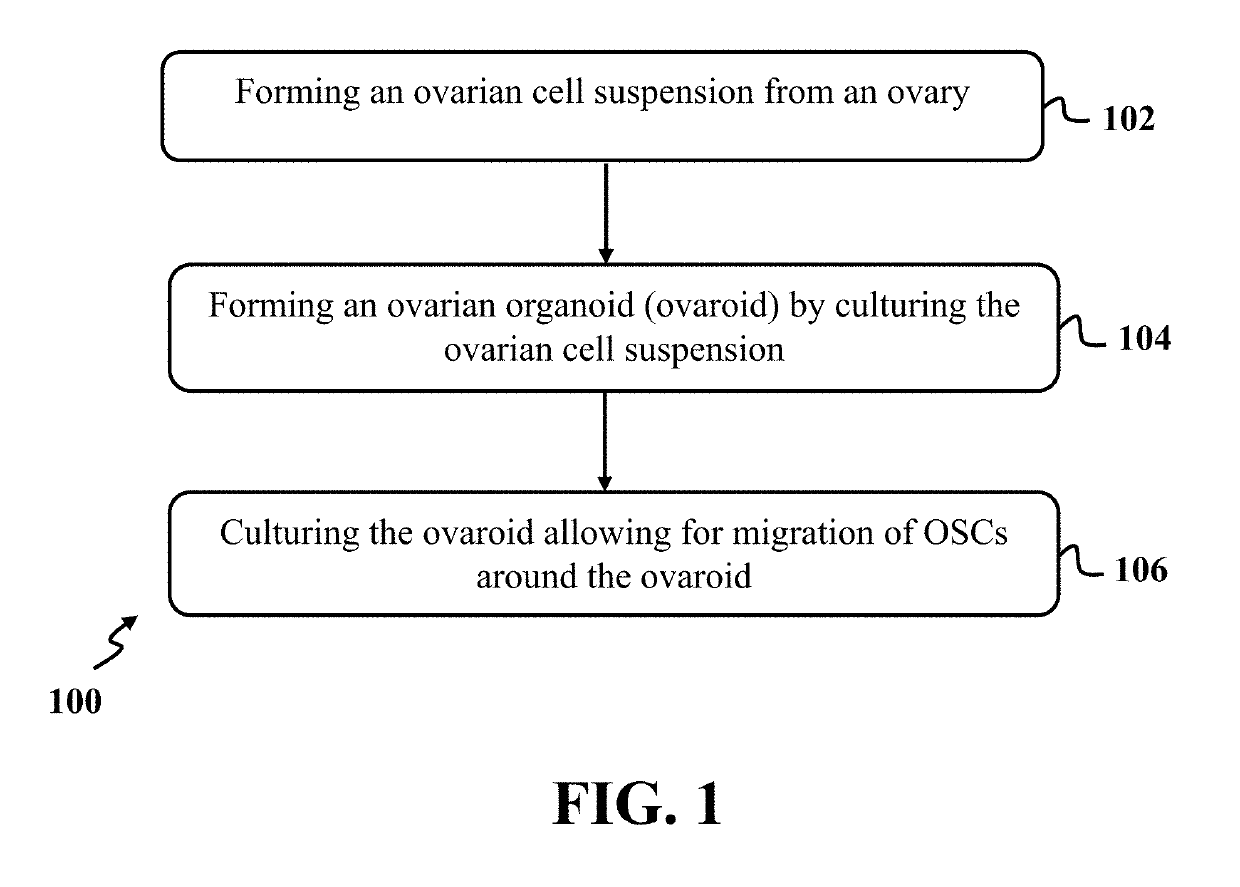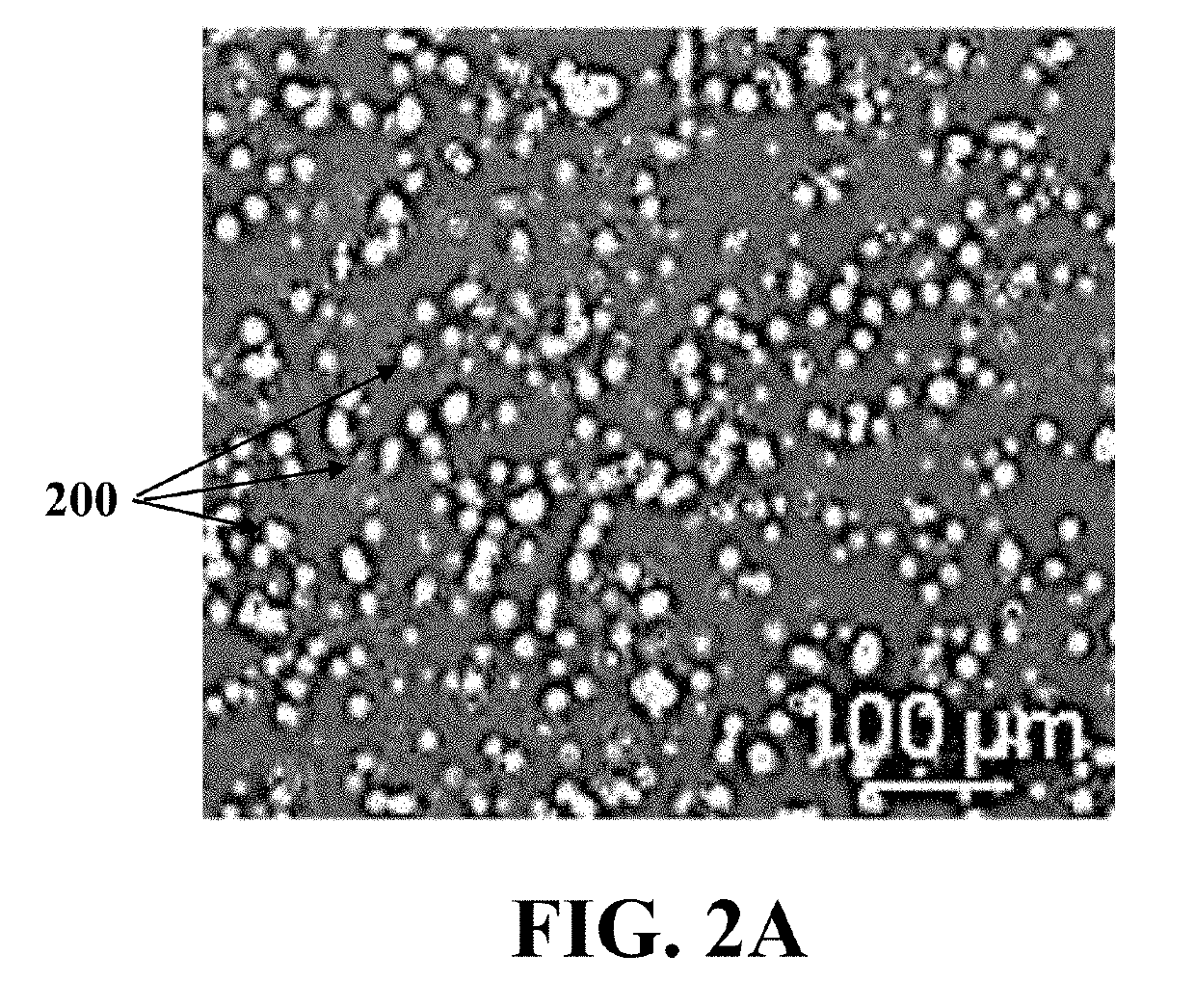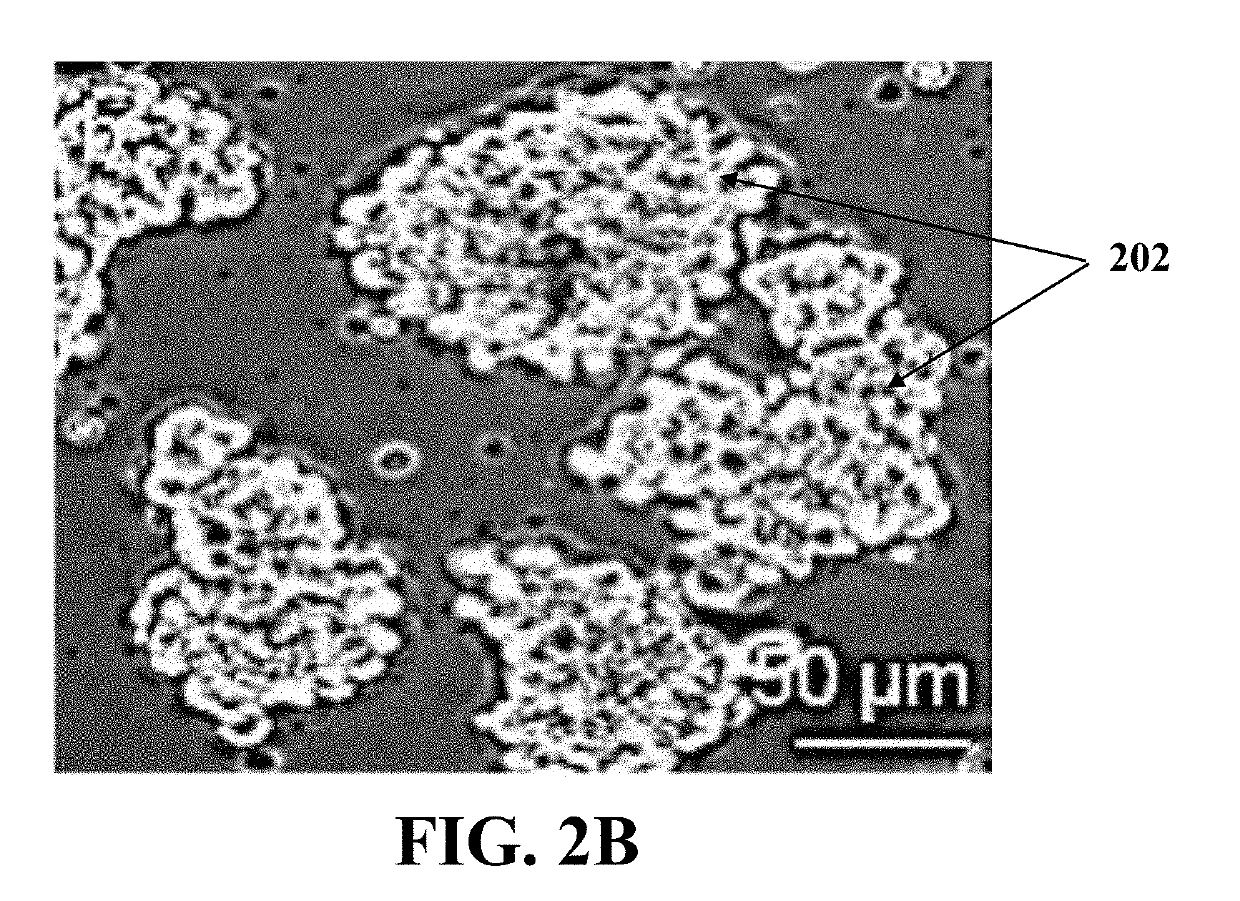Isolation of oogonial stem cells
a technology of oogonial stem cells and isolating cells, which is applied in the field of isolating oogonial stem cells, can solve the problems of time-consuming methods, low efficiency, and inability to achieve isolating these cells
- Summary
- Abstract
- Description
- Claims
- Application Information
AI Technical Summary
Benefits of technology
Problems solved by technology
Method used
Image
Examples
example 1
Of Mouse Oogonial Stem Cells
[0075]In this example, mOSCs were isolated through steps of forming an ovarian cell suspension using an adult mouse ovary, forming ovaroids by culturing the ovarian cell suspension and migrating mOSCs around the ovaroids by culturing the ovaroids.
[0076]Adult 6-8 week-old female NMRI mice were used for ovarian cells isolation from ovarian tissues. Also, green fluorescent protein (GFP)-positive OSCs were isolated from ovarian tissues of transgenic mice which expressed GFP under chicken beta-actin promoter and cytomegalovirus enhancer (pCAG). All animals were maintained in a 12-hour light-dark cycle with access to water and standard chow ad libitum.
[0077]At first, the ovarian cell suspension was formed using the adult mouse ovary through washing, dissecting, and digesting the ovary. In each experiment, ovarian tissues of 4 mice were collected and fat pad, bursa, and oviduct were removed from each of the mice ovarian tissues carefully. The ovaries were dissec...
example 2
Of Human Oogonial Stem Cells
[0109]In this example, hOSCs were isolated through the steps of forming an ovarian cell suspension using an adult human ovary, forming ovaroids by culturing the ovarian cell suspension in a three-dimensional culture, and migration of hOSCs around the ovaroids by culturing the ovaroids on a mouse embryonic fibroblast (MEF)-coated plate.
[0110]Human ovarian tissue samples were obtained after written informed consent from 8 women in reproductive age, between about 35 and about 45 years old. These women were a candidate for myomectomy, hysterectomy, or tubectomy due to different reasons including uterine fibroids that cause pain, bleeding, or blocked fallopian tubes. All of them signed informed consents, and recorded sex, age, medical history, and relatedness were obtained through a questionnaire at enrollment.
[0111]At first, the ovarian cell suspension was formed using the adult human ovary. Biopsies of human ovarian tissues with the size of about 8 cm3 were ...
example 3
Differentiation of OSCs into Oocyte-Like Cells (OLCS)
[0132]In this example, mouse and human OSCs isolated in EXAMPLE 1 and EXAMPLE 2 were differentiated into oocyte-like cells (OLCs) in-vitro. During in-vitro expansion of OSCs, spherical OLCs formed in the culture through spontaneous differentiation. However, in order to conduct directed oocyte differentiation, the OSCs were cultured in a differentiation medium. Also, every 2 or 3 days, half of the medium was replaced with a fresh medium.
[0133]The differentiation medium contained α-MEM supplemented with 10% FBS, 1 mM sodium pyruvate, 1 mM nonessential amino acids, 2 mM L-glutamine, 1× concentrated penicillin-streptomycin, 0.1 mM β-mercaptoethanol, 1× concentrated N2 supplement, 10 ng / ml rhEGF, a solution of insulin, transferrin, and selenium (ITS) with a concentration of about 5 μl / ml, 0.05 IU follicle-stimulating hormone (FSH), and 0.03 IU luteinizing hormone (LH).
[0134]Characteristics of OLCs generated from mOSCs were determined. ...
PUM
| Property | Measurement | Unit |
|---|---|---|
| time | aaaaa | aaaaa |
| time | aaaaa | aaaaa |
| diameter | aaaaa | aaaaa |
Abstract
Description
Claims
Application Information
 Login to View More
Login to View More - R&D
- Intellectual Property
- Life Sciences
- Materials
- Tech Scout
- Unparalleled Data Quality
- Higher Quality Content
- 60% Fewer Hallucinations
Browse by: Latest US Patents, China's latest patents, Technical Efficacy Thesaurus, Application Domain, Technology Topic, Popular Technical Reports.
© 2025 PatSnap. All rights reserved.Legal|Privacy policy|Modern Slavery Act Transparency Statement|Sitemap|About US| Contact US: help@patsnap.com



